Highlights of the March Sky 2019


• MARCH 1 – Look for a waning crescent moon next to the planet Saturn in the dawn sky.

In 1982, Soviet spacecraft Venera 13 returns the first color photographs of the surface of Venus.

• MARCH 2 – The crescent moon is just to the right (west) of the bright planet Venus in the dawn sky.
• MARCH 4 – The moon is at apogee, the most distant point in its orbit for the month, at 5:26 A.M CST, at a distance of 252,519 miles
• MARCH 6 Moon is at New Phase.

• MARCH 7 OBSERVING CHALLENGE: At 6:30 PM, go outside and face west to see if you can spot a thin sliver of crescent moon a few degrees to the left (east) of the planet Mercury. You will need an observing location that can give you as low a view to the horizon as possible as well as a cloud free sky. By 7:00 PM the moon and Mercury will probably be too low in the sky to be seen. Binoculars will be a big help in locating your targets.

• MARCH 8 In 1979, NASA scientist Linda Morabito discovers active volcanoes on Jupiter’s moon Io from the Voyager 1 flyby.
• MARCH 10 Daylight Savings Time begins, move your clocks ahead by one hour.
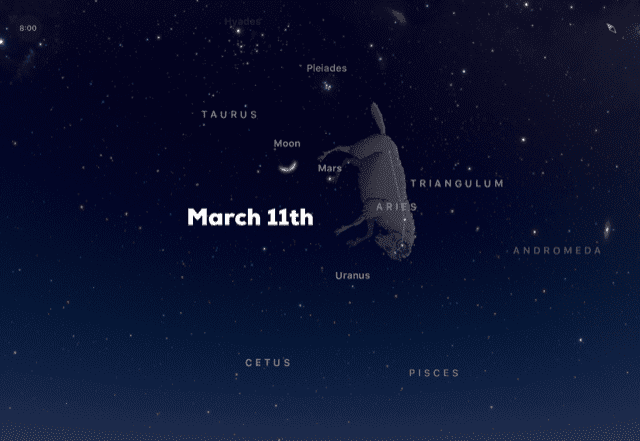
• MARCH 11 The crescent moon is a little more than six degrees to the east of the planet Mars.

• MARCH 12 Look for the moon to the lower right of the Hyades, an open star cluster in Taurus.

William Herschel discovers the planet Uranus in 1781.
• MARCH 14 The moon is now at first quarter.

• MARCH 16 Caroline Herschel is born in 1750. While Caroline devoted much of her professional life as an assistant to her more famous brother, William, she was a first rate astronomer of her own, having discovered numerous comets and deep sky objects such as Messier 110, a satellite galaxy of the Andromeda Galaxy, Messier 31. Additionally, she worked assiduously on the catalog of deep sky objects being compiled by William and his son John. This catalog, known as the New General Catalog (NGC) is still in use today.
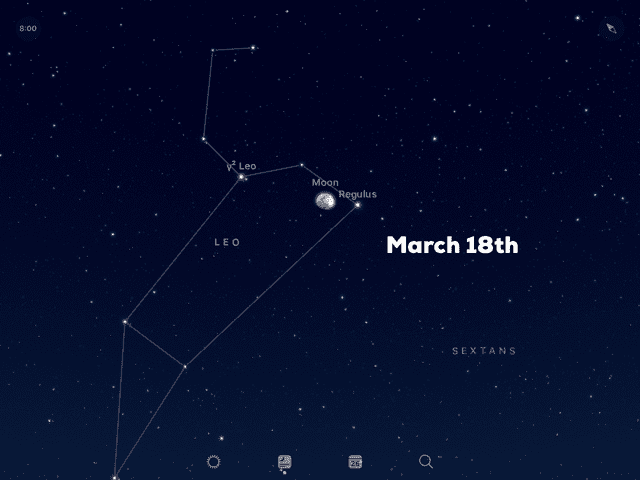
• MARCH 18 The moon is just a couple of degrees to the NE of Regulus, alpha star in the constellation of Leo.
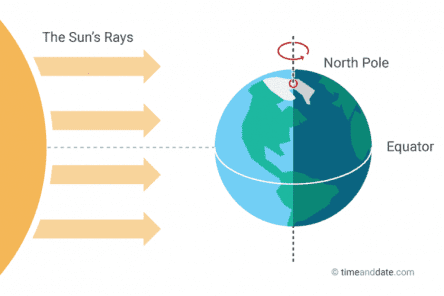
• MARCH 20- Full moon
Vernal (Spring) Equinox begins at 4:58 PM CDT. The equinox represents the exact moment that the Sun appears to cross the celestial equator, the imaginary line that is a projection of Earth’s own equator onto the sky. On the equinoxes, the Earth’s northern and southern hemispheres are neither tilted away from or towards the Sun, consequently, both hemispheres receive the Sun’s rays equally. However, contrary to what you might hear in the media, the length of both day and night are not exactly equal.

• MARCH 22 Over the next two weeks, from a dark sky locale, it is possible to see the Zodiacal Light, in the western sky right after sunset. As the ecliptic is tilted up from the western horizon at this time, it can reveal a softly glowing pyramid-shaped light during the twilight hours. This faint light is sunlight being reflected off of comet and meteoroid dust within the inner solar system.

• MARCH 25 In 1655, Christiaan Huygens discovers Titan, largest moon of Saturn
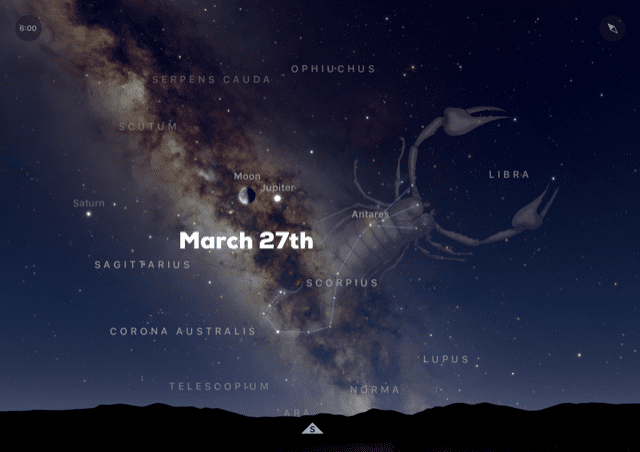
• MARCH 27 Look south during the hours of dawn to see the moon right next to the planet Jupiter.
• MARCH 28 The moon is at last quarter.
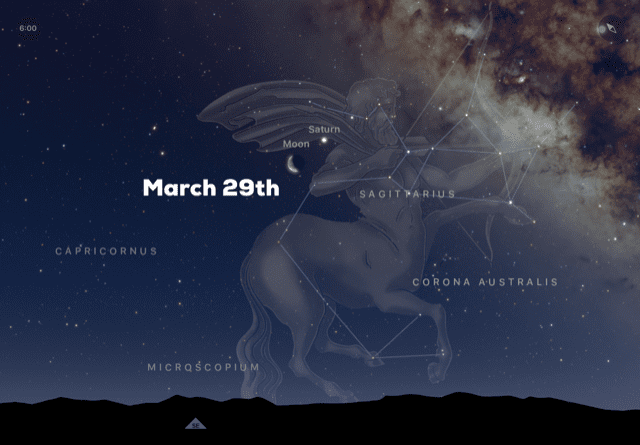
• MARCH 29 The moon and Saturn form a tight conjunction in the dawn sky facing SE.

• MARCH 30/31 Look for Mars just to the left of the Pleiades, an open star cluster in the constellation of Taurus.
